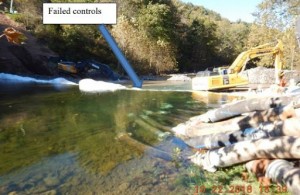From an Article by the West Virginia Rivers Coalition, June 17, 2020
Hundreds of rivers and streams throughout the two Virginia’s have been crossed or are proposed to be crossed by natural gas pipelines. The construction of these pipelines across steep terrain with highly erodible soil has been problematic for our waters in the valleys below.
Through our Citizen Oversight and Regulatory Advisory Program, WV Rivers and Trout Unlimited (TU) have documented numerous instances of water quality impacts from pipelines.
Understanding the impacts, permitting process, crossing methods, and ways to minimize impacts can get confusing so, with TU, we’ve published a new report, “Reducing Impacts of Pipelines Crossing Rivers and Streams.”
In the report, we take a closer look at the affects pipeline construction has on rivers and streams by breaking down the construction impacts into two categories: water quality impacts and habitat and aquatic life impacts.
The report takes a deep dive into the various methods pipeline companies use to cross rivers and streams, from trenching though to boring under, and examines the advantages and disadvantages of each of those crossing methods.
We explain the current legal status of the stream crossing permit, called the Nationwide 12, required for the pipelines to proceed with construction, and we offer specific recommendations that can reduce and avoid impacts of pipeline construction.
By conducting additional studies and analysis in the design and permitting phase, pipeline companies and regulatory agencies can avoid unnecessary degradation of our rivers and streams. Read the full report here.

